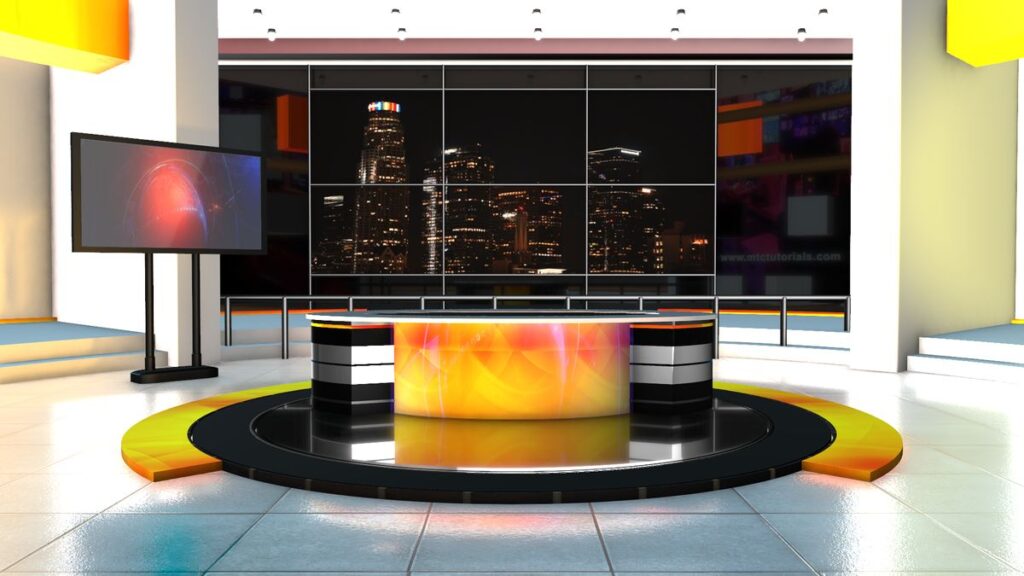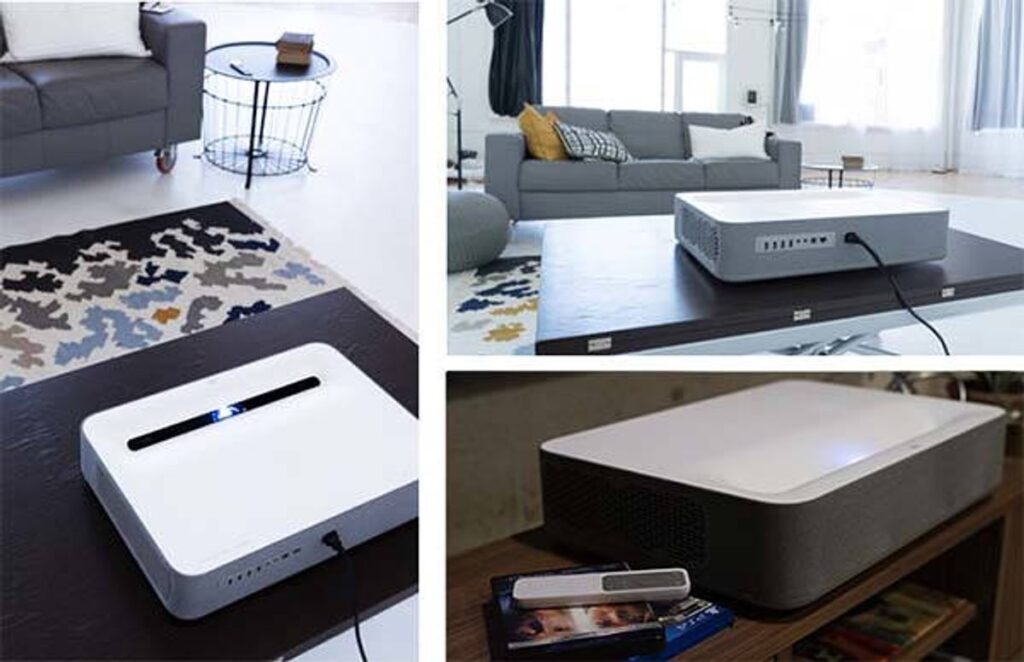Decoding the Basics of 4K Resolution

Understanding the 4K Label
When you hear the term 4K, you’re encountering a resolution standard that’s become synonymous with stunning detail and clarity. 4K refers to a horizontal display resolution of approximately 4,000 pixels. In the realm of televisions and monitors, this typically translates to a resolution of 3840 x 2160 pixels, which is exactly four times the pixel count of Full HD (1080p).
The leap in resolution from HD to 4K is significant, offering a more immersive viewing experience. Here’s a quick comparison to put things into perspective:
- Full HD (1080p): 1920 x 1080
- 4K UHD: 3840 x 2160
- 8K UHD: 7680 x 4320
As you step into the world of 4K, you’ll notice that content appears sharper, and the increased pixel count allows for closer viewing without individual pixels becoming discernible. This is particularly important for large screens where the benefits of higher resolution are most apparent. Whether you’re gaming, streaming, or creating content, embracing 4K technology means elevating your visual experience to new heights.
Comparing 4K with Other Resolutions
When you’re delving into the world of high-definition content, you’ll often hear terms like 4K, UHD, and 1080p thrown around. But what do they all mean in relation to each other? 4K resolution is often conflated with UHD, but there’s a subtle difference. While 4K refers to a professional production and cinema standard with a resolution of 4096×2160 pixels, UHD, or Ultra High Definition, is typically 3840×2160 pixels and is the consumer display and broadcast standard.
To put it in perspective, let’s compare these resolutions:
- 1080p (Full HD): 1920×1080 pixels
- UHD (4K): 3840×2160 pixels
- 4K (Cinema): 4096×2160 pixels
As you can see, 4K and UHD offer a significantly higher number of pixels than 1080p, resulting in clearer, more detailed images. This leap in quality is why 4K has become the benchmark for top-tier visual media and why it’s important to understand these differences as you step into the realm of high-definition content creation or consumption.
The Importance of 4K in Today’s Visual Media
In the realm of visual media, 4K resolution isn’t just a luxury; it’s rapidly becoming the standard. The clarity and detail that 4K provides are unparalleled, making it a must-have for content creators and consumers alike. Whether you’re a filmmaker, a YouTuber, or just love to binge-watch your favorite series, the difference 4K makes is undeniable.
With 4K, you’re not just watching a video; you’re immersing yourself in a visual experience that’s closer to reality. This is why 4K content is so sought after, and why platforms like Netflix and YouTube are increasingly offering 4K options. But to truly appreciate and create 4K content, you need the right gear. Here’s a quick rundown of what you’ll need:
- A camera capable of filming in 4K
- A computer with a fast CPU, powerful graphics card, ample memory, and sufficient storage
- A 4K-compatible monitor for accurate editing
- Video editing software that supports 4K
As you can see, embracing 4K requires an investment in quality equipment, but the payoff is a more engaging and lifelike viewing experience. And as technology advances, 4K is only going to become more prevalent, so getting on board now is a smart move for any visual media enthusiast.
Essential Gear for 4K Content Creation

Choosing the Right 4K Camera
When you’re ready to step up your video production game, selecting the right 4K camera is crucial. Your choice will shape the quality and flexibility of your content, so it’s worth taking the time to find the perfect match for your needs. If you’re looking for something more compact, the Sony ZV-E1 comes highly recommended. Known as one of the best vlogging cameras, its AI framing smarts make it a breeze to capture your shots with precision.
Before you make a decision, consider these key factors:
- Budget: How much are you willing to invest?
- Purpose: What type of content will you be creating?
- Features: What specific camera features are essential for your work?
- Compatibility: Will the camera work seamlessly with your other equipment?
Remember, the best YouTube camera for 2024 might not be the most expensive or the one with the most bells and whistles. It’s about finding the right tool that fits your unique style and production needs. And don’t forget, doing your own research, reading reviews, and watching video demonstrations can save you from buyer’s remorse.
Computers and Hardware for 4K Editing
When you’re diving into the world of 4K video editing, the heart of your setup is a robust computer. You’ll need a machine with a fast CPU, a powerful graphics card, ample memory, and plenty of storage. These are non-negotiable for handling the high data rates of 4K content. But remember, it’s not just about raw power; compatibility with your chosen editing software is crucial. For instance, if Final Cut Pro X is your go-to, then a Mac will be your only option.
Here’s a quick checklist to ensure you’ve got the essentials covered:
- Fast multi-core CPU for efficient processing
- High-end graphics card to handle 4K footage
- Minimum of 16GB RAM, though 32GB or more is ideal
- SSD for your operating system and software, with additional HDD or external storage for video files
- A 4K monitor to see your work in its full glory
Don’t forget, a monitor that accurately displays 4K resolution is vital for precise editing. And while internal storage is important, external hard drives can offer the flexibility and space you need for your projects. Balancing these components within your budget will set you up for a smooth editing experience.
The Role of Monitors in 4K Video Production
When diving into the world of 4K video production, your monitor is your window to the universe you’re creating. A top-quality 4K monitor is essential for ensuring that every pixel of your footage is displayed with the clarity and detail it deserves. You’ll want a monitor that not only has a high resolution but also offers accurate color representation and is comfortable to use during those long editing sessions.
TechRadar recently highlighted the best monitors for video editing in 2024, emphasizing the importance of hands-on testing to find the top picks for professionals. Here’s a quick rundown of two monitors that might catch your eye:
- ASUS ProArt PA348CGV: At $729, it’s an ultra-wide screen that doesn’t compromise on size or budget. Key features include ultrawide display, pre-calibrated color accuracy, and HDR-10 compatibility.
- Dell UltraSharp U2419: Priced at $369, this monitor is a budget-friendly option with an always-on integrated blue light screen to minimize eye strain, a borderless design, and the ability to swivel the screen to your preference.
Remember, while the allure of a large, vibrant display is strong, consider the compatibility with your existing setup and whether the size fits your workspace. Investing in the right monitor will not only enhance your editing precision but also your overall comfort and productivity.
Navigating the World of 4K Video Editing Software

Top Picks for 4K Editing Software
When you’re ready to take your 4K content to the next level, choosing the right editing software is crucial. Your choice of software can make or break your editing experience. Look for programs that offer a blend of power, efficiency, and user-friendly interfaces.
Final Cut Pro X and Adobe Premiere Pro are often at the top of the list for professionals and enthusiasts alike. They both support 4K editing and come with a suite of advanced features to fine-tune your videos. But don’t overlook other contenders like DaVinci Resolve, known for its color grading prowess, or the all-in-one recording and editing tool, Riverside.
Here’s a quick rundown of some popular options:
- Final Cut Pro X: Exclusive to macOS, known for its smooth performance.
- Adobe Premiere Pro: Widely used, compatible with multiple platforms.
- DaVinci Resolve: Offers exceptional color correction tools.
- Riverside: An all-in-one solution for recording and editing.
Remember, the best software for you depends on your specific needs and the hardware you’re working with. Take the time to explore these options and find the one that fits your workflow perfectly.
Features to Look for in Editing Programs
When diving into the world of 4K video editing, the array of software options can be overwhelming. Your choice of editing software should empower your creativity and not hinder it. Look for programs that offer a robust set of features that cater to your specific needs. For instance, if you’re into complex storytelling, multicam editing might be a game-changer for you.
Here’s a quick checklist of features to consider:
- Multicam editing for handling multiple angles
- Motion tracking for dynamic effects
- Color grading tools for that cinematic look
- Audio editing capabilities for crisp sound
- Support for virtual reality (VR) content, if that’s your niche
Remember, some programs, like Studio 24, are praised for their comprehensive toolset, including stop-motion video and tracked masking. It’s essential to assess how these features align with your projects. Moreover, don’t overlook the design and user interface of the software; it should be intuitive and enhance your workflow efficiency. And let’s not forget, the right graphics card in your setup can significantly affect your editing and playback performance, ensuring a seamless creative process.
Compatibility and System Requirements
When you’re ready to dive into 4K video editing, ensuring your system meets the necessary specifications is crucial. Compatibility with your editing software is key; it determines how smoothly your workflow will go. For instance, if you’re eyeing Adobe Premiere Pro, you’ll need at least 16 GB of RAM for HD media and more for 4K content.
Here’s a quick checklist to help you gauge if your setup is up to par:
- Adequate RAM (32 GB or more recommended for 4K)
- A robust CPU (Intel or AMD platforms)
- Sufficient storage (fast SSDs preferred for 4K files)
- A compatible motherboard (e.g., Intel Z790 or AMD X670)
Remember, the more powerful your system, the smoother your editing experience will be. Don’t skimp on the essentials, and always aim for the recommended requirements over the minimum to future-proof your setup.
Setting Up Your 4K Editing Workspace

Optimizing Your Computer Setup
When you’re diving into the world of 4K video editing, your computer setup is your command center. Ensuring your PC has the necessary horsepower is crucial. Start by focusing on the RAM; for 4K editing, Logical Increments recommends at least 16 GB, but more is always better to handle the intensive tasks.
Your monitor is your window into the visual world you’re creating. Aim for a 4K resolution display to match your editing output, ensuring the most accurate color and detail representation. Don’t forget about the graphics card either; it’s the backbone of smooth playback and rendering.
Here’s a quick checklist to get you started:
- Adequate RAM (16 GB minimum for 4K)
- High-resolution monitor (preferably 4K)
- Powerful graphics card
- Video-editing optimized keyboard
- Comfortable and ergonomic workspace
Remember, while budget is a key factor, investing in quality components can save you time and frustration in the long run. Continual learning and upgrading your setup can keep you at the forefront of video editing efficiency.
Creating an Efficient Editing Environment
When you’re piecing together your 4K editing workspace, think beyond just the gear. Your environment plays a pivotal role in your productivity and creativity. It’s about striking the right balance between comfort and functionality. Start by selecting a chair and desk that support good posture and allow for long editing sessions without discomfort.
Consider the layout of your equipment. Place your monitor at eye level and arrange your speakers for optimal sound. A video-editing keyboard with shortcut keys can significantly speed up your workflow, and don’t forget the importance of a powerful graphics card for smooth playback and rendering.
Here’s a quick checklist to ensure you’re on the right track:
- Comfortable chair and ergonomic desk
- Monitor at eye level
- Speakers positioned for the best audio experience
- Video-editing keyboard with shortcut keys
- High-performance graphics card
Remember, an efficient editing environment is one that caters to your unique needs. Whether you’re a beginner or a seasoned pro, take the time to research and understand the features of each piece of equipment. Continual learning and adaptation will keep your skills sharp and your workspace optimal.
Balancing Budget and Performance
When you’re diving into the world of 4K video editing, it’s crucial to strike the right balance between your budget and the performance of your equipment. You don’t have to break the bank to get started, but investing wisely in key components can save you from headaches down the line. Start by determining how much you’re willing to spend and identify which pieces of equipment are non-negotiable for your workflow.
Usability should be a guiding factor, especially if you’re part of a small team or flying solo. Opt for gear that matches your skill level and the complexity of your projects. Here’s a quick checklist to help you prioritize:
- Determine your overall budget
- Assess the essential gear for your projects
- Consider the usability based on team size and skill level
- Research and compare to get the best value
Remember, it’s not about having the most expensive setup, but about having the right tools that work for you. As you grow, you can scale up your equipment to match your evolving needs. Now onto the exciting part: our recommendations for a Full Video Editing Equipment List for All Budgets.
Future-Proofing Your 4K Experience

Emerging Technologies in 4K Displays
As you dive deeper into the world of Ultra High Definition, you’ll find that the landscape of 4K displays is constantly evolving. Two key innovations, Ultra High Definition (UHD) or 4K resolution and High Dynamic Range (HDR), have emerged as cornerstones in the realm of visual experiences. These advancements are not just about more pixels; they’re about better pixels that offer a more immersive and lifelike viewing experience.
One of the most exciting developments is the next-gen QD-OLED panel technology. It combines the best of Quantum Dot and OLED technologies to deliver brighter colors and sublime black levels. With features like a 240Hz refresh rate and a 0.03ms (GtG) response time, these displays are redefining performance standards for both gaming and professional content creation.
Here’s a quick look at what the latest 4K QD-OLED displays offer:
- Ultra High Definition (3840 x 2160) resolution
- Exceptionally fast response times
- High refresh rates for smooth motion
- Quantum Dot technology for a wider color gamut
- True black HDR for deep contrasts
- Adaptive Sync for seamless visuals
These features ensure that whether you’re editing your latest film or diving into an immersive gaming session, your experience will be nothing short of spectacular.
Staying Ahead with Software Updates
In the fast-paced world of 4K technology, staying updated with the latest software is crucial. Keeping your editing software up-to-date ensures you have access to the newest features and improvements. It’s not just about having the latest bells and whistles; updates often include vital security patches and bug fixes that can save you from potential headaches down the line.
To stay ahead, make a habit of checking for updates regularly. Most software platforms offer an automatic update feature, which can be a lifesaver. However, it’s still wise to be proactive and review what each update includes. For instance, the title ‘About software updates
Here’s a simple checklist to help you manage your updates:
- Review the update release notes for new features and fixes.
- Backup your projects before applying updates.
- Test new updates on a small project before fully integrating them into your workflow.
- Keep an eye on industry news for announcements on major software releases.
Investing in Quality Equipment for Longevity
When you’re looking to future-proof your 4K experience, investing in quality equipment is a smart move. High-quality gear not only enhances your current projects but also ensures that you’re well-equipped for the advancements the future holds. It’s about striking the right balance between cost and capabilities.
Durability and performance should be your guiding stars when selecting equipment. Remember, the best TV or editing suite isn’t always the most expensive one. It’s the one that gives you the most value over time. Consider the longevity of each piece of equipment and how it fits into your overall workflow. Here’s a quick checklist to guide your investment:
- Research the market for top-rated gear, like the best smart TVs mentioned by TechRadar.
- Assess the usability for your specific needs.
- Allocate your budget wisely, focusing on essential items first.
- Embrace continual learning to maximize the potential of your equipment.
- Don’t overlook ergonomics, such as a supportive editing chair.
By following these steps, you’ll be well on your way to building a 4K setup that stands the test of time and keeps you at the forefront of video production.
Embracing the 4K Revolution
As we’ve journeyed through the ins and outs of 4K resolution, it’s clear that the leap to Ultra High Definition is more than just a trend; it’s a transformative shift in how we experience visual content. From the rich, detailed imagery that brings movies to life in our living rooms to the precision required for professional video editing, 4K is reshaping our expectations. Whether you’re a content creator looking to stay ahead of the curve or a consumer seeking the most immersive viewing experience, the world of 4K offers a window into a future where clarity and color depth take center stage. So, grab your compatible equipment, dive into the wealth of 4K content available, and prepare to be amazed by every pixel. Remember, the journey to 4K excellence is an ongoing adventure, and with each technological advancement, we get to see our world in ever more spectacular detail.
Frequently Asked Questions
What is 4K resolution?
4K resolution, also known as Ultra High Definition (UHD), refers to a horizontal display resolution of approximately 4,000 pixels. In television and consumer media, 4K UHD has a resolution of 3840 x 2160 pixels, which is four times the number of pixels in Full HD.
What equipment is needed for 4K video editing?
Editing 4K video requires a computer with a fast CPU, a powerful graphics card, ample memory, and sufficient storage. Additionally, a 4K-capable monitor and compatible video editing software are necessary for accurate editing and content creation.
How does 4K compare to other resolutions?
4K resolution offers significantly more detail than 1080p Full HD and 720p HD resolutions. It provides a sharper and clearer image, making it ideal for large displays and close-up viewing without visible pixelation.
What are the benefits of filming in 4K?
Filming in 4K provides higher image quality, more detail, and greater flexibility in post-production, such as cropping and stabilization without loss of detail. It also future-proofs content as 4K becomes the new standard for media consumption.
What should I look for in a 4K monitor for video editing?
A 4K monitor for video editing should have a high resolution, accurate color representation, a wide color gamut, and high dynamic range (HDR) support. Features like a high refresh rate and low response time can also be beneficial, especially for gaming-related content.
Is 4K content creation more expensive than HD?
Creating 4K content can be more expensive due to the need for higher-end equipment and storage solutions to handle the larger file sizes. However, as technology advances, the cost of 4K-capable gear is becoming more accessible.
